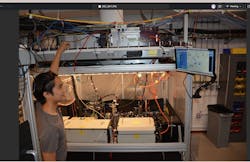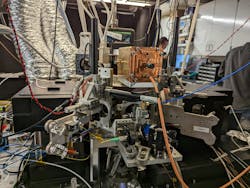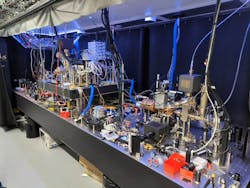What does it take to build and maintain a quantum lab?
The enormous potential of quantum technologies in computing, sensing, and communications continues to attract new researchers in academia and the commercial sector. While the methodologies to explore quantum science are diverse, nearly all rely on photonics and laser technology in at least some form. But the exact way these photonic tools are used varies depending on the experimental approach, including atomic vs. molecular systems, ions vs. neutral atoms, and analog vs. digital computing architectures, among others. For researchers entering the field, decisions about equipment and facilities—often made before work has begun—can shape what will ultimately be possible in the lab. It means making the right choices from the start is essential.
For anyone just beginning this process and searching for guidance, I asked three well-established researchers in quantum science for their advice. Christopher Monroe, a professor at Duke University and cofounder of IonQ, develops trapped-ion quantum computing systems. Wes Campbell, a physics professor at the University of California–Los Angeles (UCLA), uses ultracold atoms and molecules to investigate various physical processes involved in sensing and simulation. Nick Hutzler, an assistant professor at Caltech, uses lasers to control atoms and molecules for experiments in nuclear physics, fundamental chemistry, and quantum information.
I asked each researcher: What does it take to set up a quantum lab? They shared their insights.
HVAC is an often overlooked essential
Despite their varied experimental methods, the three researchers unanimously emphasized one aspect of lab infrastructure that’s easy to overlook: Environmental control. Hutzler says there’s a 0% success rate for achieving environmental stability without direct control of temperature, humidity, and airflow.
How good does this environmental stabilization need to be? Monroe found absolute temperature accuracy doesn’t really matter, but 0.1°F stability must be maintained, on top of airflow and humidity control. The good news is that it only needs to be accomplished within the few cubic meters surrounding an experiment. Monroe emphasizes the importance of maintaining this stability from initial setup through data acquisition to avoid hysteresis effects, although the measurements often take only seconds.
All three researchers acknowledge their standard building environmental-control systems were inadequate, so they had to commission custom systems to supplement their existing lab’s HVAC. This typically involves placing a heater within the lab’s incoming cold air duct. The heater operates based on feedback from a thermostat located near the experiment to maintain the localized temperature within a desired range. A custom system controls fan speed to minimize turbulence and performs dust filtering, and the experiment itself is housed within an enclosed area under positive pressure.
Foundation for quantum experiments
While eliminating thermal drift is important, controlling mechanical vibration is equally critical. “For our work, it’s essential that the focused laser beam remains stationary relative to the ions,” says Monroe. “Our lasers are typically positioned about a meter from the qubits, so even minor vibrations can cause significant optical misalignment in the interaction region. To minimize it, we located our labs on the ground floor and build our experiments on optical tables, breadboards, and vibration-isolation supports. These filter out ambient vibration and dampen or isolate any internal sources of mechanical disturbance within the experiment. A stable foundation is vital for work at this level of precision and sensitivity.”
Initially, Monroe was concerned because they’re located in downtown Durham, North Carolina, only a few hundred feet away from a major train line. “Fortunately, I’ve had decades of positive experience with Newport optical tables, so we’ve outfitted our facility with about 15 Newport RS4000 Series tables with S-2000A Series stabilizers,” he says. “Now that they’re installed, I never think about them. We feel the trains rumble on the floor and the tables do their job. We’ve seen no evidence that the vibrations affect the experiments.”
Hutzler doesn’t think a quantum lab necessarily needs to be located on the ground floor or basement level. Caltech uses lots of mechanical pumps and vacuum equipment, “so it’s not worth going to great lengths to avoid ambient vibration,” he says. “It’s easier to put the whole experiment on our Newport optical table and let it remove all of the noise, whatever the source.”
About the Author
Vincent Issier
Vincent Issier is the senior director of strategic marketing for MKS Inc. (Milpitas, CA).


